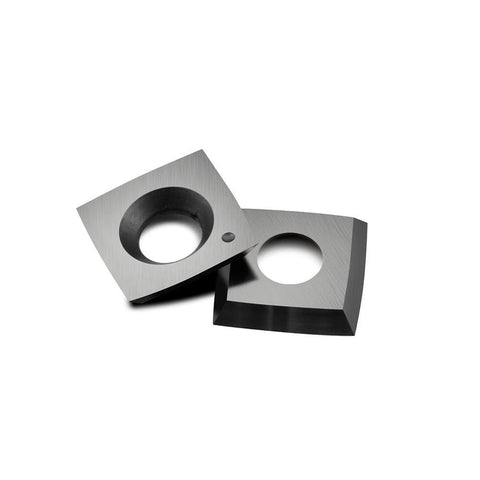Unlocking Precision: The Ultimate Benefits of Carbide Inserts
In the ever-evolving world of machining, carbide inserts stand out as one of the most remarkable advancements in cutting tool technology. For professionals in manufacturing and metalworking, understanding the advantages of carbide inserts can significantly enhance operational efficiency and product quality. These inserts, composed of tungsten carbide and cobalt, offer a range of benefits that make them an indispensable component in modern machining.
One of the most compelling advantages of carbide inserts is their exceptional hardness. Tungsten carbide, the primary material used in these inserts, is renowned for its remarkable ability to withstand high temperatures and pressures. This characteristic allows carbide inserts to maintain their sharpness and precision even under the most demanding conditions. Unlike conventional cutting tools, which may lose their edge or degrade quickly, carbide inserts provide a consistent and reliable cutting performance over extended periods.
The superior wear resistance of carbide inserts translates into longer tool life and reduced downtime. This durability is particularly beneficial in high-volume production environments where tool replacement and maintenance can be costly and time-consuming. By minimizing the frequency of tool changes, carbide inserts help streamline operations and lower overall production costs. This advantage is particularly evident in industries such as automotive and aerospace, where precision and efficiency are paramount.
Another significant benefit of carbide inserts is their ability to deliver a high-quality surface finish. The rigidity and sharpness of carbide inserts enable them to produce smooth and accurate cuts, reducing the need for extensive post-machining processes. This ability to achieve a fine surface finish not only enhances the aesthetic quality of the final product but also ensures that components meet stringent tolerance requirements. For manufacturers, this means fewer reworks and higher customer satisfaction.
Carbide inserts also offer versatility in machining operations. They come in a variety of shapes and sizes, allowing them to be used for a wide range of applications, from turning and milling to drilling and boring. This versatility enables machinists to tackle diverse projects with the same set of inserts, optimizing tool inventory and reducing the need for specialized equipment. The adaptability of carbide inserts makes them a valuable asset in a variety of machining scenarios, from complex aerospace components to everyday metalworking tasks.
The cost-effectiveness of carbide inserts, when evaluated over their entire lifecycle, is another notable advantage. While the initial investment in carbide inserts may be higher compared to other cutting tools, their extended tool life and reduced maintenance requirements result in lower overall operating costs. This cost-benefit ratio becomes even more favorable in high-production environments where the efficiency and longevity of tools directly impact the bottom line.
In addition to their practical benefits, carbide inserts contribute to improved safety in machining operations. Their durability and consistent performance reduce the likelihood of tool failure, which can pose significant risks to machinists and equipment. By providing a reliable cutting solution, carbide inserts help ensure a safer working environment and mitigate potential hazards associated with tool wear and breakage.
The development of carbide inserts represents a significant leap forward in machining technology, offering a range of advantages that enhance performance, efficiency, and safety. Their exceptional hardness, wear resistance, and versatility make them a preferred choice for manufacturers seeking to optimize their machining processes. As industries continue to demand higher precision and productivity, the role of carbide inserts in achieving these goals remains crucial.
In conclusion, the ultimate benefits of carbide inserts extend far beyond their initial cost. Their ability to deliver consistent, high-quality performance, coupled with their durability and versatility, makes them a valuable investment for any machining operation. By delving into the advantages of carbide inserts, manufacturers can unlock new levels of efficiency and precision, ultimately driving their success in a competitive marketplace.



